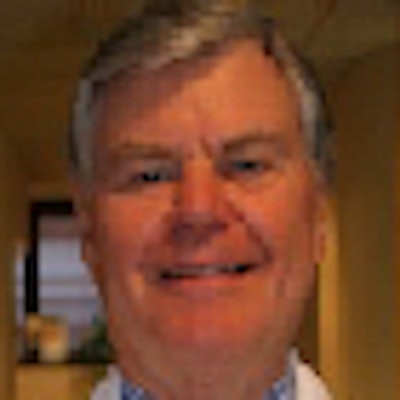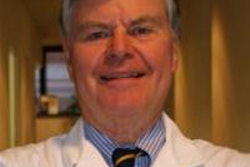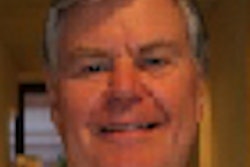
Editor's note: This article first appeared on the website Dental Intelligence on August 8, 2012. Reprinted with permission of William T. Brown, DDS.
From the Wall Street Journal, January 2012: "Kodak Teeters on the Brink."
The iconic American brand of the 20th century has since filed for bankruptcy. Was it failure of imagination? Was it entrenched convictions and provincial thinking? In an era of global competition, companies must be fleet of foot, not a deer in the headlights turning into road kill.
 William T. Brown, DDS.
William T. Brown, DDS.Could the same thing happen to the dental profession?
A short decade ago, dentistry was in the realm of the solo practitioner, providing individualized treatment in a personalized setting. In a blink of an eye, the profession has morphed into corporate practices with no face and solo/group practices with an eye on the bottom line. The days of "patient first" are being brushed aside for dental "institutes," gurus, consultants, scripting, periodontal conversions, home run case acceptances, and how to get 100 new bodies per month.
Dentists who shouldn't pick up a handpiece or lay individuals are now telling highly educated professional people what to do and how to run their livelihood. For example, a 20-something front-office person telling the dentist what the treatment plan should be to hit their arbitrary production numbers. What's the next big thing, and how to attract the lemmings, is the mantra.
Read the handwriting on the wall. Does dentistry need to follow in the footsteps of our failing healthcare system? Gone are the solo practices, and now it's getting harder to see a real physician. Is the dental therapist a peek into the future of dentistry?
Massachusetts is targeting medicine instead of the unsympathetic insurance companies to control runaway costs. Under the new plan, all doctors, hospitals, and other providers must register with a new state bureaucracy as a condition of licensure -- that is, permission to practice. The Massachusetts commission, comprising 11 members appointed by Gov. Deval Patrick, is empowered to control the practice and organization of medicine. Could dental practice be next?
In the 1980s, I spent lunchtime in the doctor's dining room of the largest private medical center in our state. At that time, the medical center had three hospital administrators; two of them were patients in my practice. All the medical specialists were independent practitioners, some in groups, while others solo.
I told my physician colleagues that I could read the tea leaves and that in the near future the "RDs" (real doctors) would be working for the administrators and making less than their bosses.
My comments were met with hearty laughs all around. They derisively told me, "That will never happen."
Wrong.
Now most RDs work for the hospital or a characterless corporation, with TV ads showing physicians without names. Just their specialty and whom they work for. The administrators retire with wonderful financial packages and are set for life. Any RD I know who can afford it has left medicine.
Is this the future of our profession? I don't have a crystal ball, but I would say we are well along that slippery slope.
So what is the answer? I don't presume to have THE solution, but here is a beginning:
Commit to a practice that is patient-centered and delivers a health service that is significant in terms of the patient's living values.
Gain satisfaction from creative work as a dentist, enjoying the respect, creativity, and the joy of simply being occupied in your own special work. Being motivated not primarily by money and financial gain, but by the work itself, by self-esteem and the admiration of the people associated with it: patients and staff. This can be a reward that can motivate more than money.
Establish relationships that are a continuous process conditioned by good will and responsive attitudes.
Educate patients so when they leave your office they can explain to friends their relationship with you and how it benefits them, immediately and in the years ahead.
Diagnosis and treatment planning provided by a qualified dentist.
Adjusting fees for public aid clients that reflect realistic overhead coverage could mitigate the disparity in dental care for this underserved population. Instead of developing a second level of care using minimally trained dental health aide therapists (DHATs), fully qualified dental teams could take care of these deserving citizens.
The dental profession should take the lead in a broad-based, omnibus educational initiative to eliminate oral disease. This would be cheaper and more effective than the complex and expensive training involved in a new cadre of dental therapists.
Have we forgotten that dental disease is preventable and controllable? You can exercise, improve your diet, and stop smoking and still have cancer, heart disease, or other systemic problems. Simple changes in daily habits are proven to eliminate decay and periodontal disease except in unmanageable areas. Why shouldn't our profession be the leaders in trying to put ourselves out of business?
There is agreement that oral healthcare needs to be delivered more efficiently and with accountability. The question is, accountable to whom? In my view, we should be accountable to patients and not political rulers of dentistry.
Will the American model of dental practice, which has been a standard for the world, follow the path of Kodak? Only time will tell, but our legacy can continue to serve our contract with society.
We have the opportunity to be transformative with our practice models in response to the challenges we face. The relationship-based model is still the gold standard, where patients are treated as total human beings.
William T. Brown, DDS, practices in Des Moines, IA. He started his blog, Dental Intelligence, in 2010 to share information and experiences that have fundamentally changed the way dentistry is practiced.
The comments and observations expressed herein do not necessarily reflect the opinions of DrBicuspid.com, nor should they be construed as an endorsement or admonishment of any particular idea, vendor, or organization.



















